Sod is pre-grown grass held together by a thin layer of a biodegradable material or soil.
Homeowners looking for instant results often look towards sod as it can be used to establish a lush, green, and dense lawn from scratch in just a few days. However, selecting a sod for your yard is no easy task. Living grass or sod is costly, and so many varieties are available that choosing an ideal sod type for your property can be nerve-wracking.
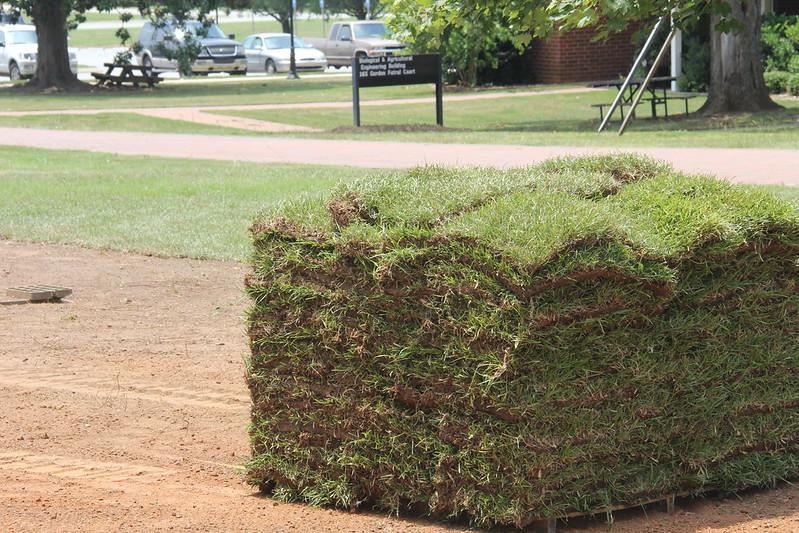
Photo Credit If you want to establish a lawn quickly, Install sod rather than planting grass seed.
The most important thing to do when selecting sod is to learn about the different grass types and sod types available in your region. You also need to pay close attention to the soil type in your yard and remember that every grass has slightly different maintenance needs and applications. Choosing the ideal sod can make a lot of difference, saving you money, time, and effort in the long run.
So, let’s go ahead and discuss different sod types and their pros and cons.
RELATED: How To Lay Sod For The Best Results? A Comprehensive Guide
Consider This When Purchasing Sod
Multiple factors come into play when determining the adaptability and success of a grass type. And you must consider those factors to maximize your time, effort, and money spent.
For instance, not everyone uses the lawn in precisely the same way. So, if you use your yard for many outdoor activities, you must pick up a sod type that can withstand wear and tear. Similarly, it would be best if you considered your region. If you live in the country’s southern areas, you must choose warm-season sod types that can withstand the summer heat.
So, let’s take a detailed look at these factors before we discuss different sod types.
1. What Is Your Budget?
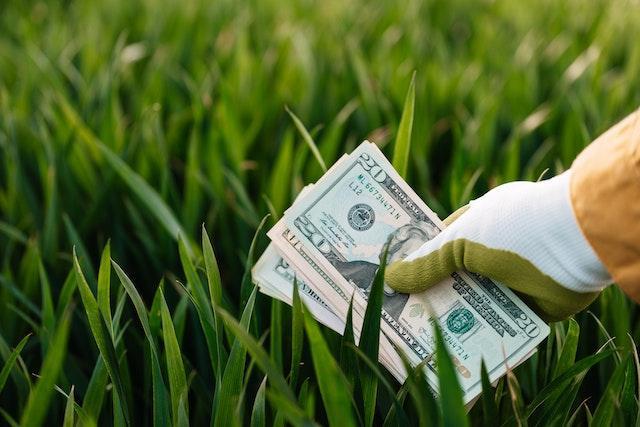
Photo Credit The average cost of sod installation is $1,850, or between $1 and $2 per square foot.
Laying sod gives you an instant lawn. However, you will have to pay for that instant gratification. Sod costs much more than planting a lawn from seeds. And, sometimes, all that matters is how much you are willing to spend to establish a new yard.
Not all sods are created equally. The cost of sod relies heavily on the supplier and mainly its grade, which refers to the overall look and health of the grass. The type of grass you choose will also significantly impact the cost of your project.
Sod for many grass types is available in the market, and I highly recommend not going with a cheap one to save some money. Installing sod is a significant investment, and picking the highest grade and best type is critical for the success of your project.
Below is a rundown of approximate costs for some of the most widely used grass sods:
| Type of Sod | Low End (per sq. ft.) | High End (per sq. ft.) |
| Bahia grass | 0.20 $ | 0.30 $ |
| Bent grass | 0.55 $ | 0.63 $ |
| Bermuda grass | 0.46 $ | 0.85 $ |
| Centipede grass | 0.80 $ | 0.85 $ |
| Fine fescue | 0.33 $ | 0.60 $ |
| Kentucky bluegrass | 0.30 $ | 0.60 $ |
| Perennial ryegrass | 0.53 $ | 0.82 $ |
| St. Augustine grass | 0.44 $ | 0.92 $ |
| Tall fescue | 0.50 $ | 0.58 $ |
| Zoysia grass | 0.50 $ | 0.73 $ |
It is also important to note here that the cost of your project will also vary depending on the size of your property that needs to be sodded and labor wages in the area.
2. Grass Maintenance Needs
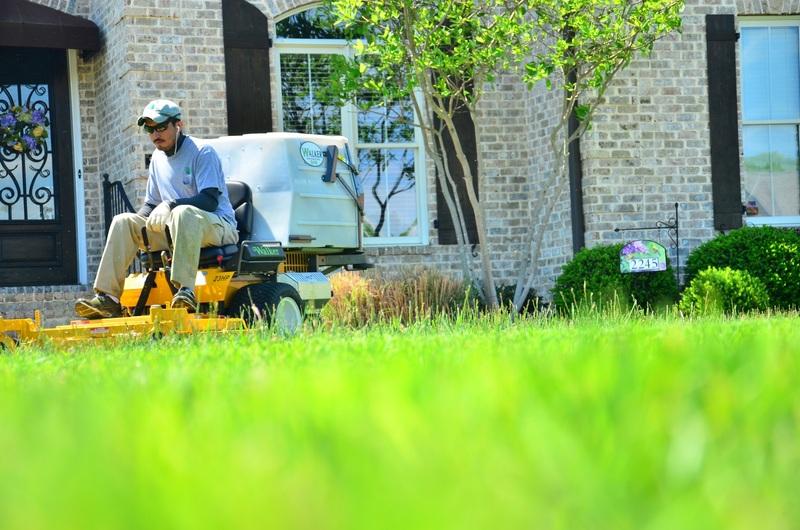
Photo Credit Fine fescue is the most popular low-maintenance sod type if you don’t want to do much.
With sod, you do not need to worry much about establishing the lawn. However, once the grass is mature and you have a fully developed yard, you must follow a proper lawn care schedule and take care of the grass just like a lawn established from seeds.
Taking care of grass and maintaining a property is no easy task. It involves working hours watering, fertilizing, mowing, aerating, and dethatching the grass. However, not all grasses are equal; some require more care than others. For example, one type of grass may need more fertilizer, but the other might require more watering.
Therefore, it is essential that you clearly understand the care and maintenance needs of the sod you are considering choosing. It will help you care for your lawn better and ensure that your grass maintains its lush, green, clean, and serene color forever.
Furthermore, not all grass or sod types require equal care. Some sod types are much less demanding than others. Some of the most low-maintenance grass types commonly used on lawns include Zoysia, Buffalo, Bermuda, St. Augustine, and Fescue grass.
3. The Look You Prefer
As mentioned, planting sod is expensive. And, if you spend a significant amount of money on something that also needs care and maintenance, you should be able to enjoy it too. Therefore, when purchasing sod, know the look you are going for and want.
For instance, if you like the look of thick and wide grass blades, you should pick grasses such as tall fescue grass and St. Ausgutuine grass. However, if you prefer thin and delicate grass blades, select a grass type such as Zoysia and Bermuda grass.
4. Consider The Soil Type
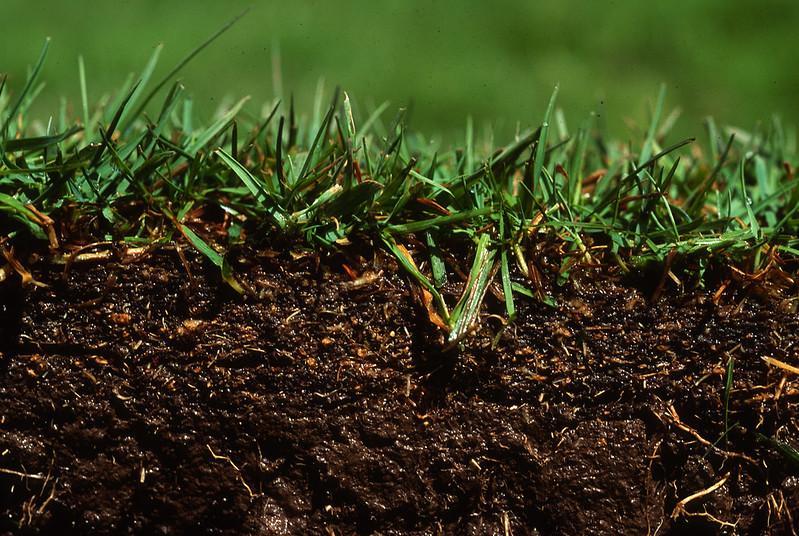
Photo Credit. When choosing sod for your lawn, pick a grass type that matches your climate and your yard’s soil type.
Soil types in which most turfgrasses are grown include sand, clay, marl, or muck-type soils. If you want to create a perfect and healthy lawn, your soil will ideally have a balanced amount of sand, silt, and clay. However, it is not only the nature of the soil that matters; the condition of the soil, i.e., its pH, nutritional profile, and physical properties, also matter.
Therefore, you must identify the soil type and condition before choosing a sod type. Ideally, you should get a soil test from your local extension or a good soil testing laboratory. A soil test provides plenty of information about the soil type and health, which could help pick and maintain the sod in the long run.
Here are a few examples to help you better understand soil’s role.
- If you live in an area with clay soil and high salt content, you should go for Zoysia sod. It has high salt tolerance and grows in an abundance of different locations.
- St. Augustine is a perfect choice if you reside in a coastal region with subtropical weather. It thrives in sandy soils and can withstand coastal weather.
- If your soil is compact, no sod will grow well. However, some types may thrive with some work. These grasses have long roots, such as fescue and ryegrass.
5. Resistance To Wear & Tear
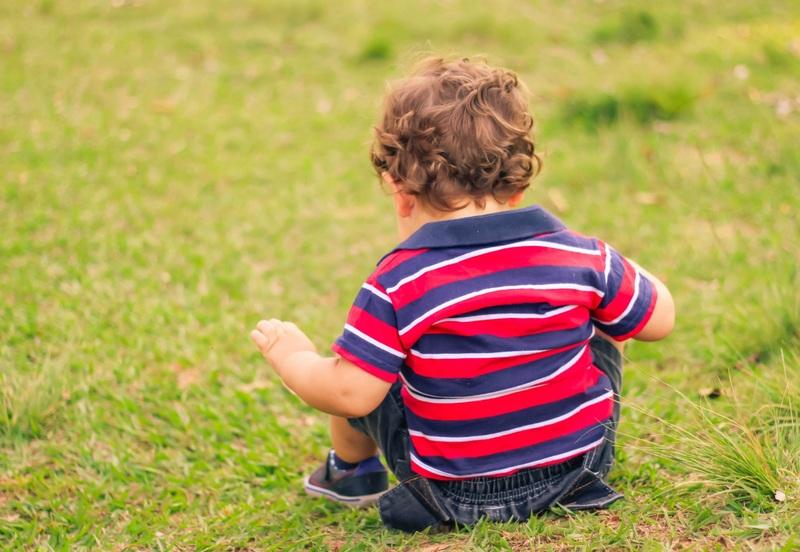
Photo Credit Lawns are ideal as a peaceful place for children to play, but this fun comes at a cost.
Another thing you must remember when choosing sod for your lawn is its resistance to wear and tear. It is significant for properties with high foot traffic and homeowners with outdoorsy pets, and children who cannot stay away from a lush green grass carpet.
Therefore, if you want a lawn that can withstand the outdoor activities of your loved ones, you must pick a durable and sturdy grass type. Furthermore, if your loved ones include furry little cats and dogs, you must choose a grass type that can stand against urine burns.
Commonly used grass types in North America with a high resistance to foot traffic and general wear and tear include tall fescue grass, Kentucky bluegrass, Bermuda grass, Perennial ryegrass, Zoysia grass, Centipede grass, and Buffalo grass.
There is one thing to remember here, though. Grass types with high resistance to wear and tear often have coarse and thick leaves, so you will have a more challenging time mowing them. And, over time, it will put a significant burden on your grass-trimming routine.
RELATED: How To Properly Water New Sod? Tips & Tricks From The Experts | A Comprehensive Guide
6. Resistant To Disease & Bugs
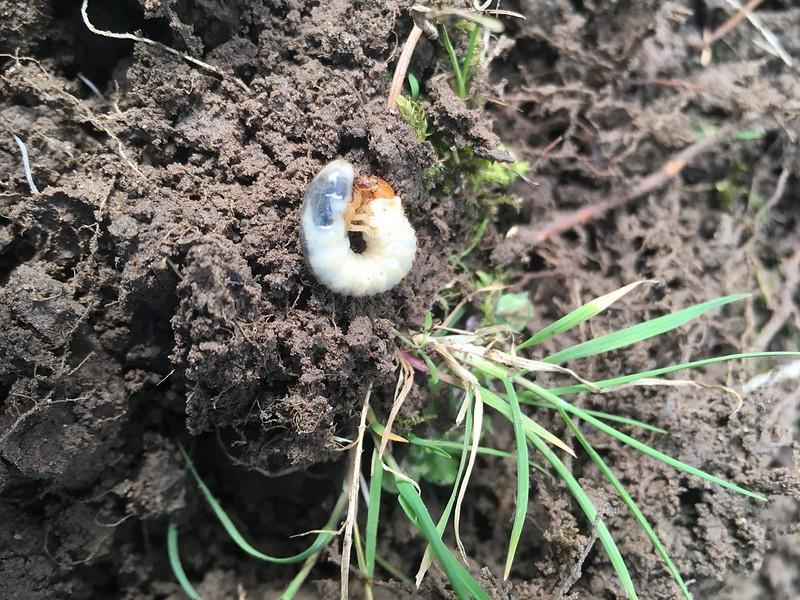
Photo Credit While no grub-resistant sods exist, species with a deeper root system are typically more tolerant of grubs.
While no turfgrass is resistant to lawn diseases and fungi, certain species have some innate immunity against them. Therefore, if lawn diseases and bugs are an issue in your area, you should look for a grass type with coarse leaves and a deeper root system.
Grasses with extensive root systems can defend themselves against lawn fungus and pesky backyard weeds. Moreover, if grubs and other lawn pests are a significant problem in your area, you should choose a turfgrass with coarse leaves. Such sod types are much more capable of defending themselves against grass damage.
Likewise, if chinch bugs are an issue for your region, I highly recommend staying away from St. Augustine grass. Chinch Bugs are not pests; they are predators. And they are primarily a problem in St. Augustine grass lawns, mainly in the coastal areas of the US.
However, it is essential to remember that no matter how resistant your sod is to lawn diseases and pests, you cannot protect your grass from them unless you take measures to eradicate them. And it all starts with correctly identifying the problem.
Get started using bug identification guides from The University of Minnesota Extension and The University of New Hampshire Extension Services. And, if the problem is not bugs, use these lawn disease identification guides by clicking on the links below:
- Turfgrass Diseases: Quick Reference Guide – The University of Georgia
- Lawn Diseases: Prevention and Management – The University of California
- Identification & Management of Grass Diseases – The University of Missouri
7. Sunlight Availability On Your Property

Photo Credit It’s biological that grass needs sunlight to survive, and constant shade can cause many problems.
Like all plants, grass needs sunlight to carry out photosynthesis and make its food. Therefore, your lawn will not grow well if your sod is not receiving adequate sunlight. However, some sod types can make it with less sunlight than others.
So, if sunlight availability is an issue on your property or backyard or if large trees cover it with dense canopies and tall buildings, you should pick a turfgrass species that is shade resistant. The best shade-resistant grass species for cool-season areas are fine fescue grass, tall fescue grass, and perennial ryegrass.
In contrast, the best shade-resistant grass types for warm-season regions of the United States are Zoysia grass and St. Augustine grass. You could also mix sod types to get by.
Types of Sod For Your Lawn
Now that you know everything about the factors and elements you need to consider before buying sod for your lawn, let’s go ahead and look at the different options.
1. Bahia Grass
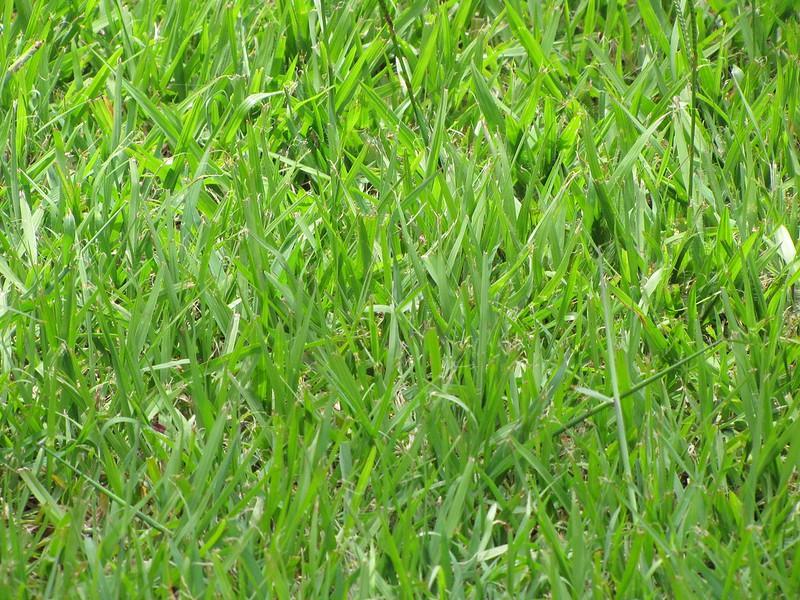
Photo Credit Bahia grass is a perennial warm-season grass grown extensively in the southeastern US.
Bahia Grass Quick Facts
| Scientific Name | Paspalum notatum |
| USDA Growing Zones | 7 to 11 |
| Fertilizer Needs | Moderate |
| Recommended Mowing Height | 2 to 3 inches (5 to 7.5 cm) |
| Recommended Soil pH | 5.5 to 6.5 |
| Soil Requirements | Well-drained sandy, loamy, and clay soils. |
| Sunlight Needs | Prefers full sunlight exposure but can tolerate partial shade |
Bahia Grass Overview
Bahia grass is known for its excellent heat and drought resistance. It can even grow where other grass types have difficulty establishing themselves. However, if you are looking for a grass species with delicate and soft leaves, it is not the right choice for your yard.
Although commonly used as lawn and pasture grass, Bahia grass can also be used in “sod-based rotation” arrangements to squash crop pest problems.
Also, it thrives better than other grasses in infertile, sandy soils with less care.
Bahia Grass Pros & Cons
| Pros | Cons |
| Highly drought-tolerant Tolerates a wide range of soils Good cold tolerance Low-maintenance grass Has some shade tolerance | It can become invasive. Susceptible to certain diseases. It may not be suitable for high-traffic areas. Can develop a thatch layer. Slow to establish from seed |
2. Bermuda Grass
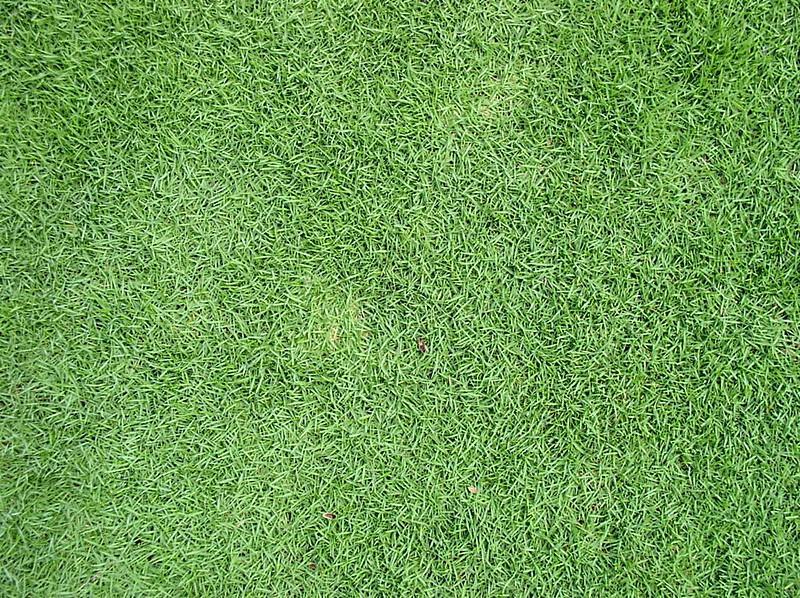
Photo Credit Bermuda grass is a medium- to fine-textured warm-season turfgrass used widely in the US.
Bermuda Grass Quick Facts
| Scientific Name | Cynodon dactylon |
| USDA Growing Zones | 7 to 10 |
| Fertilizer Needs | Frequent |
| Recommended Mowing Height | 0.5 to 2 inches (1.25 to 5 cm) |
| Recommended Soil pH | 6.0 to 7.0 |
| Soil Requirements | Well-drained soils, sandy and clay soils |
| Sunlight Needs | Full sun exposure is required for optimal growth |
Bermuda Grass Overview
If you need a tough lawn that can thrive in the dry and hot weather of the Southern States of the United States, you cannot go wrong with the Bermuda grass. Bermuda grass tolerates difficult conditions such as salinity, heat, and drought exceptionally well.
In warmer tropical areas, Bermuda grass will remain green all year long. However, Bermuda grass may go dormant and turn brown in summer regions with temperatures below 15 C ( or 60 F). So, please keep that in consideration when choosing sod.
Lastly, Bermuda grass is low maintenance, but it requires frequent fertilization.
Bermuda Grass Pros & Cons
| Pros | Cons |
| Highly drought-tolerant Rapid growth and good wear tolerance Can recover quickly from damage Tolerates a wide range of soils Has good heat tolerance | Requires frequent fertilization. It can become invasive. Susceptible to certain diseases. Poor shade tolerance. Low cold tolerance. |
3. Centipede Grass
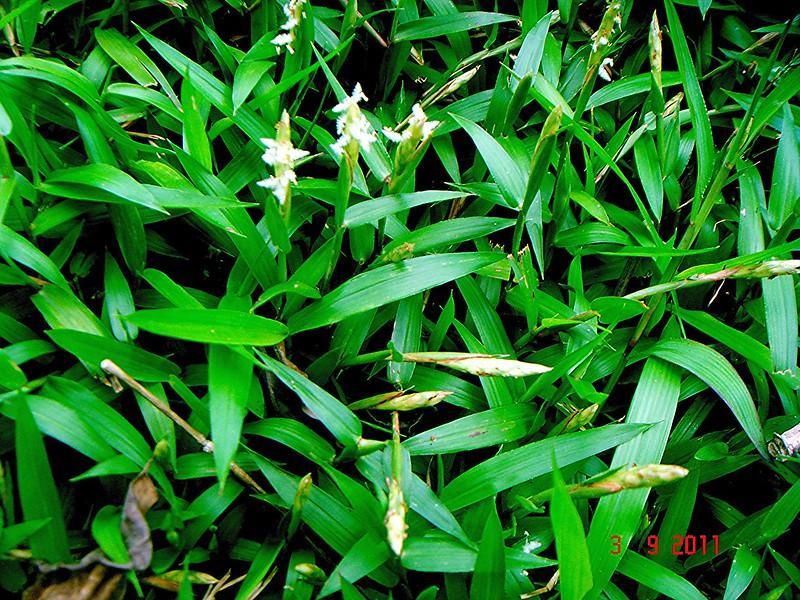
Photo Credit Centipede grass is a popular turf grass for lawns in the southern United States.
Centipede Grass Quick Facts
| Scientific Name | Eremochloa ophiuroides |
| USDA Growing Zones | 7 to 10 |
| Fertilizer Needs | Low fertilization needs compared to other grass types |
| Recommended Mowing Height | 1.5 to 2.5 inches (3.75 to 6.25 cm) |
| Recommended Soil pH | 5.0 to 6.0 |
| Soil Requirements | Prefers well-drained, sandy soils |
| Sunlight Needs | Prefers full sun exposure but can tolerate some shade |
Centipede Grass Overview
Centipede grass is known for its low maintenance requirements and its exceptional ability to handle heat. However, unlike the two sod types mentioned above, the extraordinary heat tolerance of Centipede grass does not equate to good drought tolerance.
The grass gets its name from the way the short, upright stems that arise from a single spot on the stolons, giving it a crab-like appearance. Also, please remember that Centipede grass does not perform well in high-traffic areas and will show signs of wear and tear.
However, it is incredibly low-maintenance and is known as “the lazy man’s grass.”
Centipede Grass Pros & Cons
| Pros | Cons |
| Low-maintenance grass with low fertilizer needs Has good heat tolerance Tolerates acidic soils well It can produce quite a bit of thatch Has good weed resistance | Slow to establish from seed. Not as drought-tolerant. Susceptible to certain diseases. Poor cold tolerance. Sensitive to over-fertilization and certain herbicides. |
RELATED: How To Grow Sod In Shady Areas Of The Lawn? Best Sod For Shady Lawns
4. Zoysia Grass
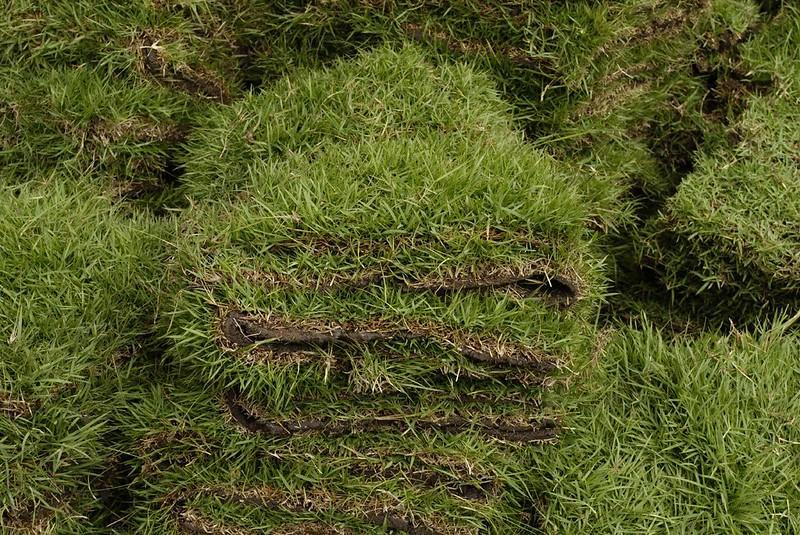
Photo Credit Zoysia is a highly aggressive spreading grass that can choke pesky lawn weeds.
Zoysia Grass Quick Facts
| Scientific Name | Zoysia spp. |
| USDA Growing Zones | 5 to 10 |
| Fertilizer Needs | Requires moderate fertilization |
| Recommended Mowing Height | 0.5 to 2 inches (1.25 to 5 cm) |
| Recommended Soil pH | 6.0 to 7.0 |
| Soil Requirements | Prefers well-drained soils and can tolerate sandy and clay soils |
| Sunlight Needs | Prefers full sun exposure but can tolerate some shade |
Zoysia Grass Overview
If you want a grass type that can withstand heavy foot traffic and does not require much upkeep in fertilization, I highly recommend purchasing Zoysia grass sod. It spreads from branching rhizomes and stolons and forms a thick grass carpet.
It would be best to plant it from late spring to early summer for the best results. However, please remember that Zoysia grass spreads slowly compared to other common grass sods, so please plan accordingly and give it enough time to establish itself in the soil.
There are several species and cultivars of Zoysia grass available. My favorite ones include Zoysia japonica, Zoysia matrella, and Zoysia tenuifolia.
Zoysia Grass Pros & Cons
| Pros | Cons |
| Tolerates drought and heat well. Good wear tolerance and low maintenance. Quick to recover from damage. Has good cold tolerance. Suitable for high-traffic areas. | Slow to establish from seed. It can become invasive. Susceptible to certain diseases. Poor shade tolerance. It can develop thatch if not appropriately managed. |
5. St. Augustine Grass
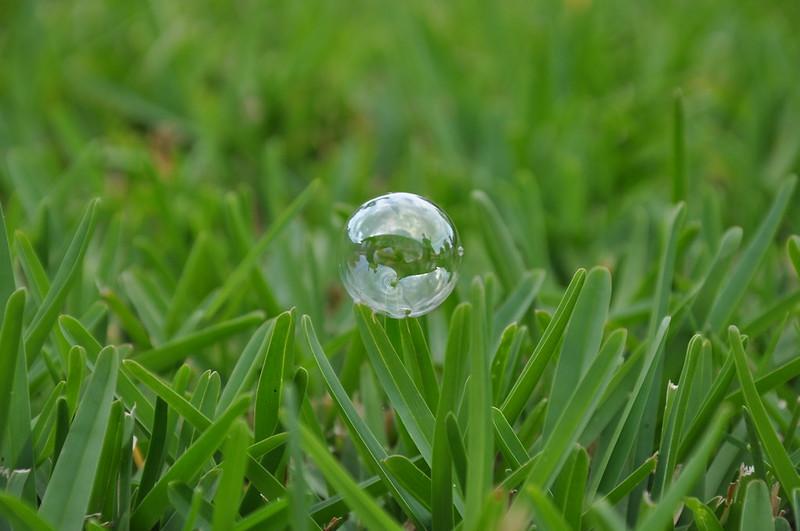
Photo Credit St. Augustine Grass is widely adapted to the US’s warm, humid (subtropical) regions.
St. Augustine Grass Quick Facts
| Scientific Name | Stenotaphrum secundatum |
| USDA Growing Zones | 8 to 10 |
| Fertilizer Needs | Requires moderate fertilization |
| Recommended Mowing Height | 2.5 to 4 inches (6.25 to 10 cm) |
| Recommended Soil pH | 5.0 to 8.5 |
| Soil Requirements | Prefers well-drained soils, can tolerate sandy and clay soils |
| Sunlight Needs | Prefers full sun to partial shade exposure |
St. Augustine Grass Overview
St. Augustine grass is sometimes called “buffalo grass.” However, a different plant is what many mean when they refer to the latter. If you look along the coastal states of the US and are having a hard time establishing your lawn, you might want to check it out.
St. Augustine grass has good tolerance against saline conditions and can thrive in humid and hot areas along the seashore. However, it does not do well in heavy traffic, so please remember when choosing sod for your property or backyard.
Lastly, it might also be an ideal candidate for your lawn if it is covered by shade or large trees. However, it still needs 4 to 6 hours of sunlight to grow and thrive.
St. Augustine Grass Pros & Cons
| Pros | Cons |
| Good shade tolerance. Lush, dense turf. Low-maintenance. Good heat tolerance. Quick to recover from damage. | Susceptible to lawn diseases. Sensitive to cold temperatures. May develop thatch. Lower wear tolerance. It can become invasive. |
6. Fine Fescue

Photo Credit Fine fescue is a cool-season turfgrass often used in no-mow and reduced-mow lawns.
Fine Fescue Grass Quick Facts
| Scientific Name | Festuca spp. |
| USDA Growing Zones | Varies by species, typically 3 to 9 |
| Fertilizer Needs | Low to moderate fertilization needs |
| Recommended Mowing Height | 2 to 3.5 inches (5 to 8.75 cm) |
| Recommended Soil pH | 5.5 to 7.5 |
| Soil Requirements | It can tolerate many soil types. However, it prefers well-drained soils. |
| Sunlight Needs | Tolerates shade but prefers full sun exposure. |
Fine Fescue Grass Overview
If you live in a cool-season grass area, such as the northern regions of the United States, you will benefit immensely from fine fescue sod to establish a lawn. It stays green almost all year long if the weather is mild and has good shade and drought tolerance.
Furthermore, fine fescue is a fantastic choice for people looking for sod with fine, soft, and delicate leaves to establish backyards. You can even overseed your warm-season grass lawns in the winter with fine fescue to maintain a green color all year round.
However, if you choose fine fescue sod to establish your yard, please remember that it does not perform well in high foot traffic conditions from people or pets.
Grass Pros & Cons
| Pros | Cons |
| Good shade tolerance. Low-maintenance. Cold-tolerant. Drought-tolerant (some species). Creates a dense, attractive turf. | Susceptible to diseases. Lower wear tolerance. May not tolerate extreme heat and humidity well. Sensitive to the salt content in soil/water. Slow to establish from seed. |
7. Tall Fescue
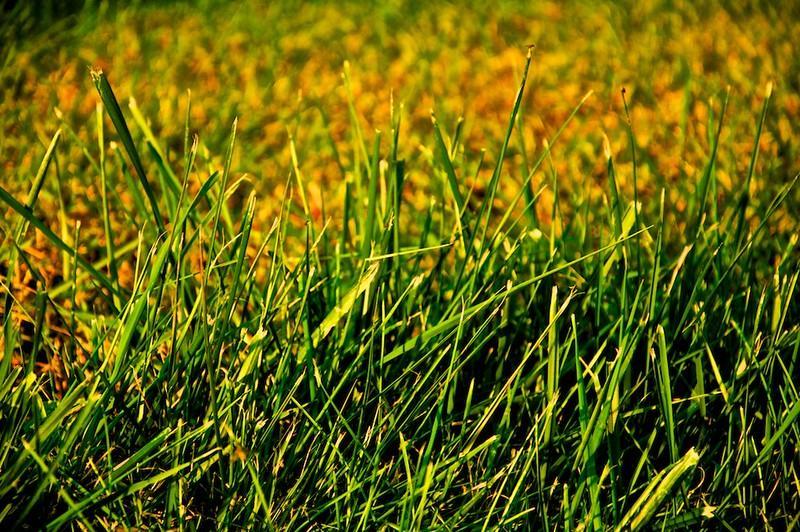
Photo Credit Tall fescue has wide coarse blades, which make it ideal for areas with high foot traffic.
Tall Fescue Grass Quick Facts
| Scientific Name | Festuca arundinacea |
| USDA Growing Zones | 2 to 7 |
| Fertilizer Needs | Low to moderate fertilization needs |
| Recommended Mowing Height | 2 to 3.5 inches (5 to 8.75 cm) |
| Recommended Soil pH | 5.5 to 7.0 |
| Soil Requirements | Tolerates a range of soil types, prefers well-drained soils |
| Sunlight Needs | Tolerates shade but prefers full sun exposure |
Tall Fescue Grass Overview
Unlike the grass types mentioned above on the list that create carpet-like turf, tall fescue grass has a clumping growth habit, which might be a terrible choice for dense, uniform turfs. However, it has coarse leaves and can maintain its blades in heavy traffic areas.
Furthermore, its deep root network gives it excellent heat and drought tolerance. However, after heavy use, you might need to reseed or resod some thin and patchy areas. Some people also refer to tall fescue grass as Kentucky 31 fescue grass, and it is widely used in regions like baseball fields and commercial sites due to its durability.
Lastly, what sets tall fescue grass apart from other sod types is that established tall fescue lawns are low maintenance and need infrequent mowing and watering.
Tall Fescue Grass Pros & Cons
| Pros | Cons |
| Good shade tolerance Good wear tolerance Good heat tolerance Some varieties have excellent drought tolerance Deep root system | Susceptible to certain diseases Requires frequent watering Requires frequent mowing. It may require overseeding Coarse texture |
8. Kentucky Bluegrass

Photo Credit Kentucky bluegrass grows 18 to 24 inches tall and is readily identified by its boat-shaped leaf tip.
Kentucky Bluegrass Grass Quick Facts
| Scientific Name | Poa pratensis |
| USDA Growing Zones | 2 to 7 |
| Fertilizer Needs | Moderate fertilization needs |
| Recommended Mowing Height | 1.5 to 2.5 inches (3.75 to 6.25 cm) |
| Recommended Soil pH | 6.0 to 7.0 |
| Soil Requirements | Prefers well-drained soils |
| Sunlight Needs | Prefers full sun exposure but can tolerate some shade |
Kentucky Bluegrass Overview
Kentucky bluegrass is what’s known as a perennial, cool-season lawn grass. Kentucky bluegrass prefers full sun but will tolerate some shade. However, its growth slows during the warm summer months and becomes prone to lawn diseases under stress.
Nevertheless, Kentucky Bluegrass is an excellent choice for lawns subjected to high foot traffic, and it can self-repair injured, worn, or damaged spots.
Kentucky bluegrass is often confused with tall fescue and perennial ryegrass. So, if you are confused, you can readily identify it by its boat-shaped leaf tip.
Kentucky Bluegrass Pros & Cons
| Pros | Cons |
| Fine texture Good cold and wear tolerance Deep root system Quick establishment Attractive appearance | Requires frequent watering Susceptible to certain diseases Requires frequent mowing May require overseeding Not as heat-tolerant as other species. |
9. Ryegrass
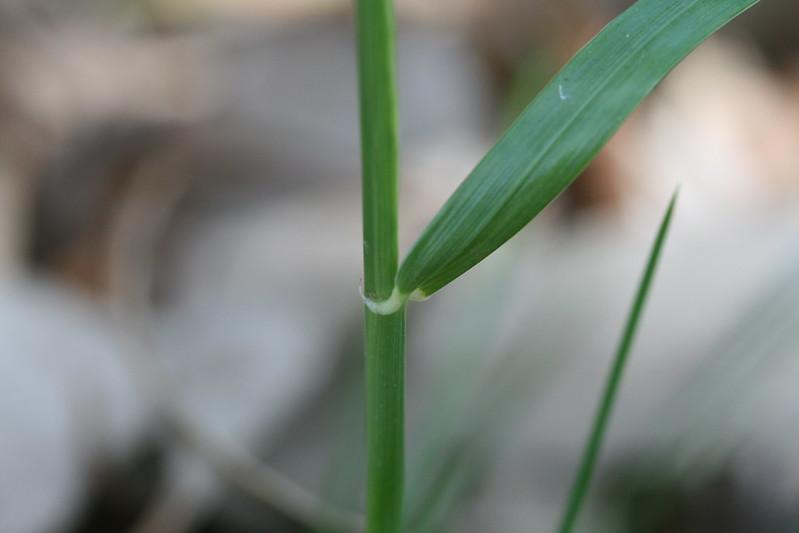
Photo Credit Part of the Poaceae family, ryegrass is a cool-weather, fast-growing grass that can be established from sod.
Ryegrass Quick Facts
| Scientific Name | Lolium spp. |
| USDA Growing Zones | 3 to 9 |
| Fertilizer Needs | Moderate to high fertilization required |
| Recommended Mowing Height | 1.5 to 2.5 inches (3.75 to 6.25 cm) |
| Recommended Soil pH | 5.5 to 7.5 |
| Soil Requirements | Prefers well-drained soils |
| Sunlight Needs | It can survive in partial shade but prefers full sun |
Ryegrass Overview
Ryegrass is often used around homes, schools, and parks. It is a very competitive cool-season grass that has the highest traffic tolerance of any coo-season grass.
Furthermore, ryegrass will stay green well into the spring and only goes dominant and turns brown when the heat of June arrives. Nevertheless, one of the things that people first notice about perennial ryegrass is its shine. It reflects light better than other grasses.
So, if you are sensitive to the aesthetics of a lawn, consider this when buying ryegrass sod.
Ryegrass Pros & Cons
| Pros | Cons |
| Quick establishment Good wear tolerance Fine texture and attractive appearance Heat-tolerant Versatile for lawns and pastures | Not as cold-tolerant Requires frequent mowing Susceptible to certain diseases Requires regular fertilization It has a shallow root system. |
10. Buffalo Grass
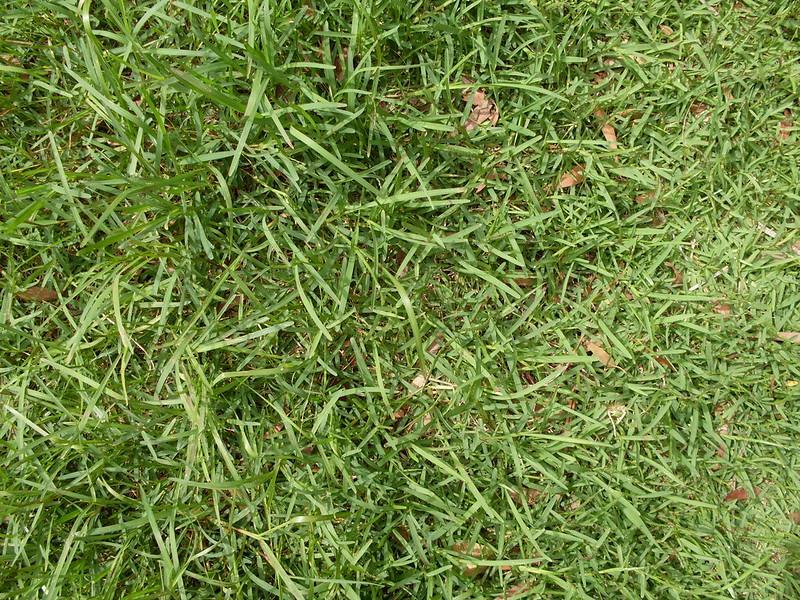
Photo Credit Buffalo grass looks luscious, soft, and green and can tolerate up to 70 percent shade.
Buffalo Grass Quick Facts
| Scientific Name | Buchloe dactyloides |
| USDA Growing Zones | 3 to 9 |
| Fertilizer Needs | Low fertilizer requirements |
| Recommended Mowing Height | 2 to 4 inches (5 to 10 cm) |
| Recommended Soil pH | 6.0 to 7.5 |
| Soil Requirements | Prefers well-drained soils |
| Sunlight Needs | Full sun exposure required |
Buffalo Grass Overview
Buffalo grass is native to the Great Plains from Montana to New Mexico. It is low maintenance and tough as turf grass and offers a low-resource alternative to traditional turf grasses such as Bermuda, Zoysia, Centipede, and St. Augustine grass.
It has light-green leaves and forms a dense, coarse-textured lawn that resists wear and weeds. Moreover, Buffalo grass tolerates heat and cold quite well. However, before buying Buffalo grass sod, please review its pros and cons given below.
Buffalo Grass Pros & Cons
| Pros | Cons |
| Drought-tolerant and requires little water Low fertilizer requirement and minimal maintenance Fine texture and good wear tolerance Suitable for lawns and naturalized areas Handles high-traffic areas | Not shade-tolerant and requires full sun Slow establishment rate from seed May turn brown during extended drought periods It has a slow growth rate Requires occasional watering in extended droughts |
Final Thoughts
And there you have it. A list of the different types of sod that can be used to establish home lawns and other grassy spaces. However, once again, please consider your budget, needs, use, and the look you are going for when buying sod for your lawn or backyard.
Lastly, know your grass before purchasing and planting its sod on your property.
Frequently Asked Questions (FAQs)
Can you lay sod over existing grass?
Lying sod over existing grass is not good as it could kill your sod and cause you twice as much work. It t may not be the answer you’d like to hear, but if you want good results, please prepare the soil thoroughly before you lay pallets of sod on your lawn.
What is the difference between turf and sod?
Sod and Turf are close in definition but not the same. The turf is the top layer of a grassy area consisting of a grass mat and its roots. In contrast, sod is a section of grass that has already grown plants bound together by a root system or thin soil.
What is the lifespan of sod?
A well-cared-for lawn should last anywhere from 30 to 40 years. However, most properties established with sod only last for about 7 to 8 years. Therefore, if you want your lawn grass to survive long, follow a proper lawn care regimen and care for its needs.
What is the easiest sod to maintain?
Arguably, fine fescue is the most popular low-maintenance cool-season grass.
Now you know your grass types! Also, check out our other articles:
What Grass Types Are Used On World’s Best Golf Courses?
Zoysia Grass – Popular Types | How To Choose The Right Zoysia For Your Lawn
What Are Different Bermuda Grass Types, And Which Is Best For A Lawn?







